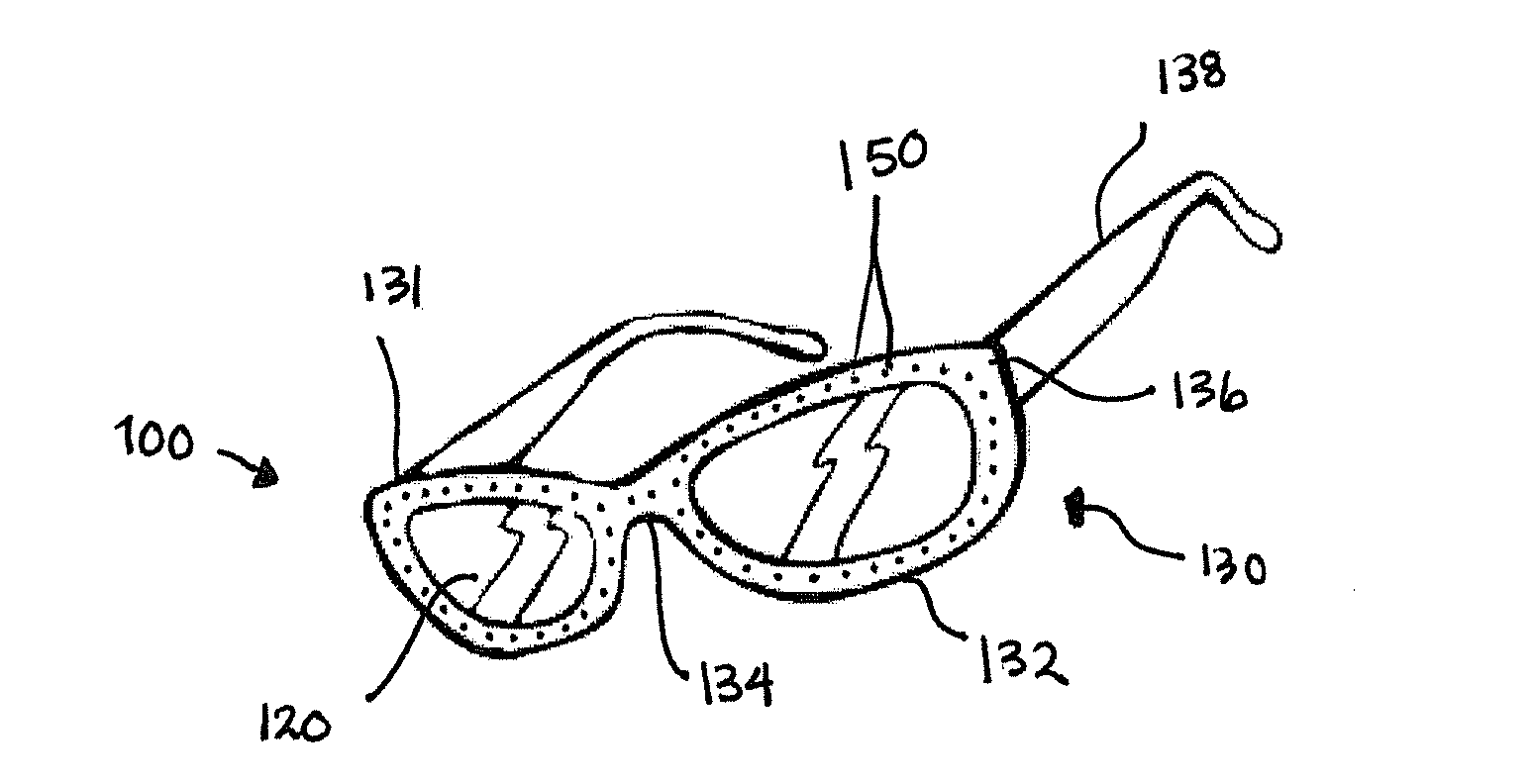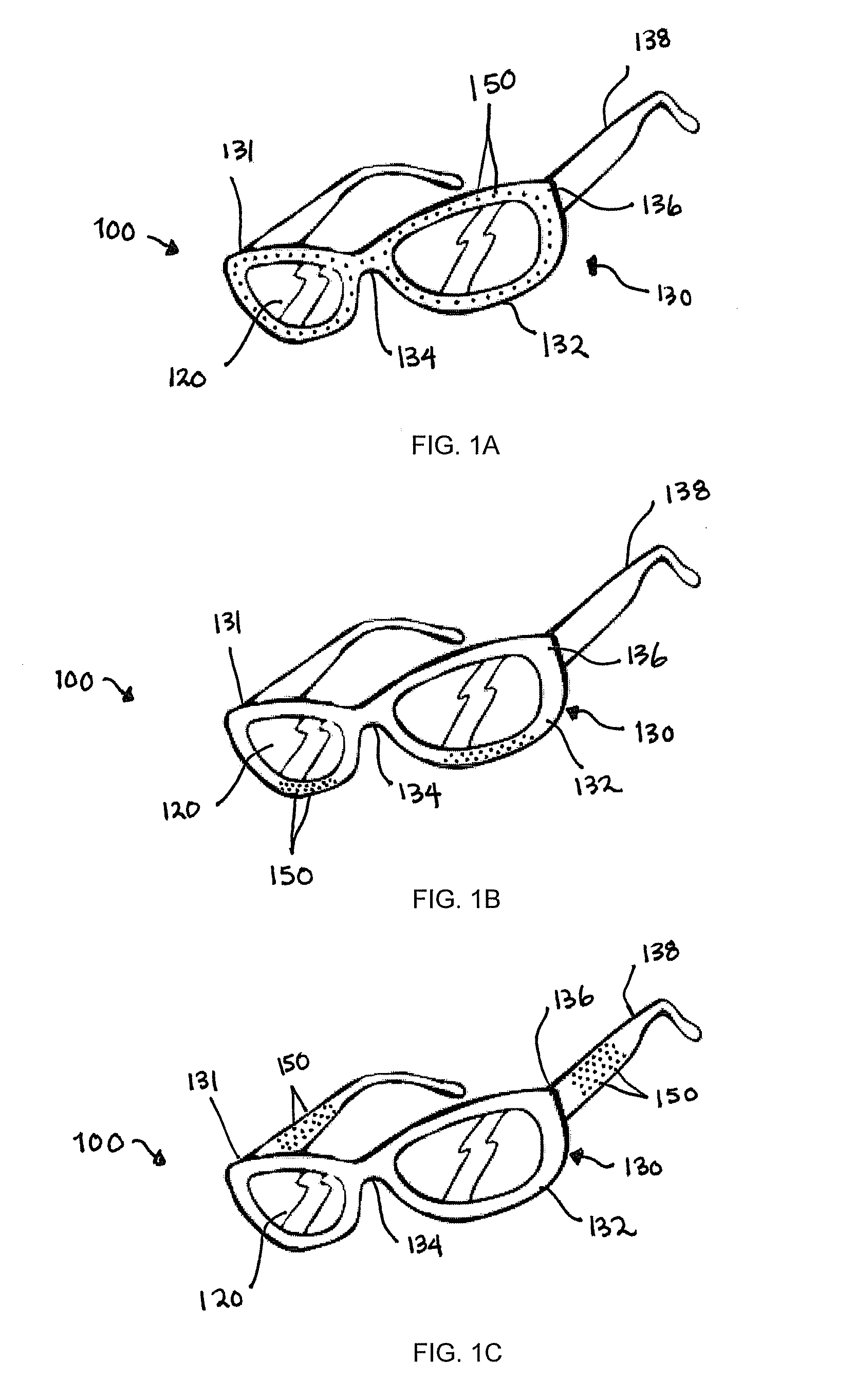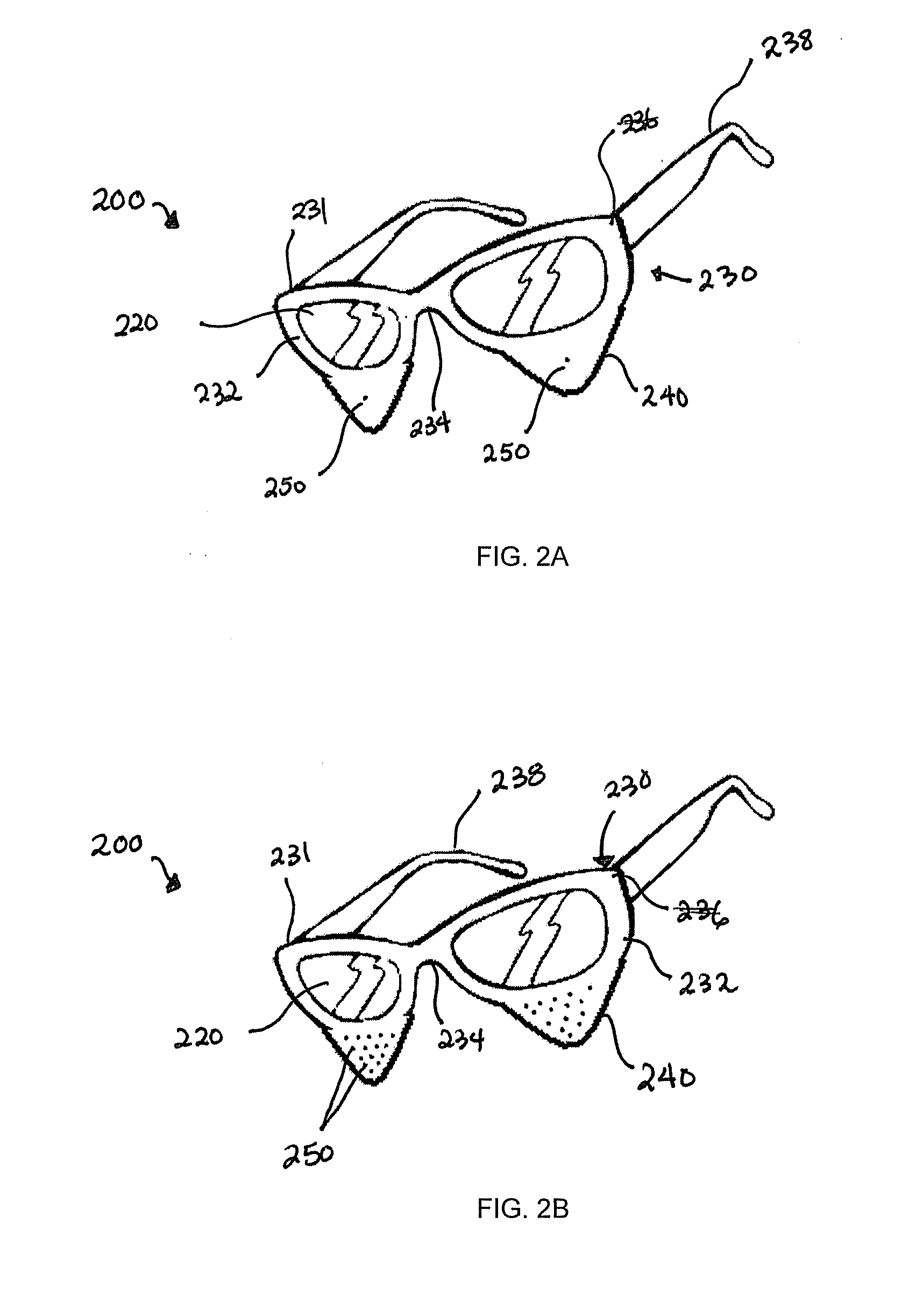Eyewear with pinhole aperture and lens
a technology of pinhole aperture and lens, applied in the field of eyewear, can solve the problems of inability to prevent, difficult to focus on close objects, and inability to develop presbyopia, so as to improve or enhance one's visual acuity, improve visual acuity, and improve visual acuity
- Summary
- Abstract
- Description
- Claims
- Application Information
AI Technical Summary
Benefits of technology
Problems solved by technology
Method used
Image
Examples
Embodiment Construction
[0032]The present inventions provide for an optical device that provides pinhole apertures together with an eyeglass frame. In some embodiments, at least two different mechanisms for improving or enhancing one's visual acuity: one or more corrective lenses and one or more optical apertures. In other embodiments, the pinhole apertures may be provided in a frame that holds non-corrective lenses, such as shaded lenses for sun protection, or clear lenses for style. In still other embodiments, the apertures may be provided in an eyeglass frame that is configured to hold a corrective or non-corrective lens, but in which no lens has yet been inserted. In still other embodiments, pinhole apertures may be provided in a visor or other appliance that is configured to clip or attach to an eyeglass frame. Any or all of these embodiments may be preferred, depending on the various anticipated needs or desires of the end user.
[0033]Eyeglasses generally fall into three categories: full-rimmed, half-...
PUM
 Login to View More
Login to View More Abstract
Description
Claims
Application Information
 Login to View More
Login to View More - R&D
- Intellectual Property
- Life Sciences
- Materials
- Tech Scout
- Unparalleled Data Quality
- Higher Quality Content
- 60% Fewer Hallucinations
Browse by: Latest US Patents, China's latest patents, Technical Efficacy Thesaurus, Application Domain, Technology Topic, Popular Technical Reports.
© 2025 PatSnap. All rights reserved.Legal|Privacy policy|Modern Slavery Act Transparency Statement|Sitemap|About US| Contact US: help@patsnap.com



